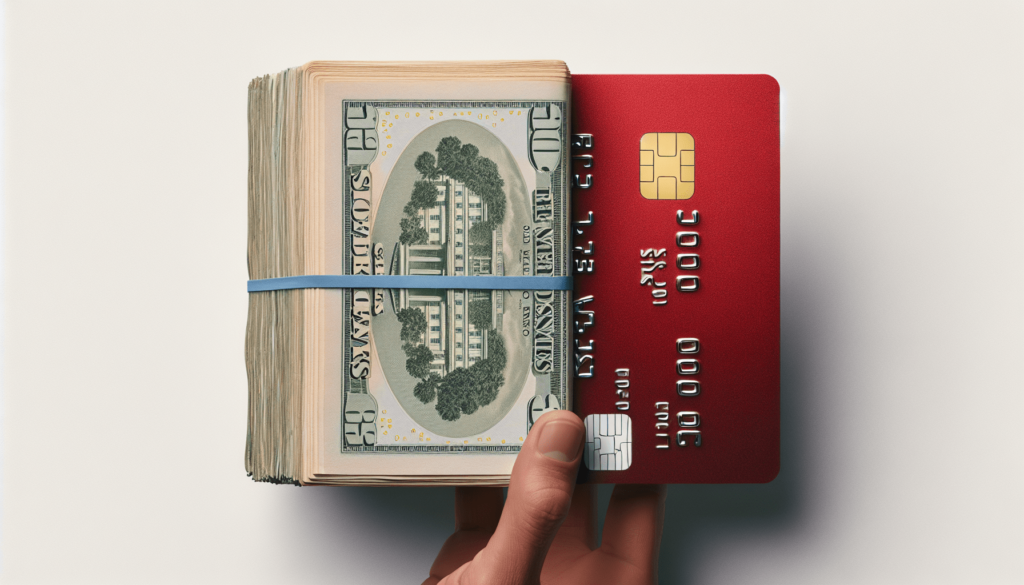Welcome to the ultimate guide on understanding the difference between hard money and soft money! Hard money refers to funds that are directly contributed to a candidate’s campaign and are subject to federal regulations and contribution limits, while soft money involves donations made to political parties or committees with more flexibility in how the funds are spent. By diving into the nuances of these two types of money in politics, you’ll gain a clearer insight into the complexities of campaign finance laws and their impact on elections. Let’s explore the distinctions between hard money and soft money together! What Is The Difference Between Hard Money And Soft Money?
Have you ever heard the terms “hard money” and “soft money” but aren’t quite sure what they mean or how they differ? In the world of finance, these terms are commonly used to describe different types of currency or forms of payment. Let’s delve into the nuances and distinctions between hard money and soft money to gain a better understanding of these concepts.
Defining Hard Money and Soft Money
Hard money and soft money are terms used to classify different forms of currency or payment methods. Each has unique characteristics and implications based on how they are obtained and used. Understanding the difference between the two can help you make more informed financial decisions.
Hard Money
Hard money refers to currency that is backed by a tangible asset or commodity. Typically, hard money is issued by a government or central authority and can be exchanged for the actual value of the underlying asset. In the past, hard money was often tied to the value of gold or silver, providing a tangible guarantee of its worth.
Hard money is considered more stable and secure than soft money because it is tied to a valuable commodity. This gives it intrinsic value that is not subject to fluctuations in the economy or market conditions. Gold and silver are commonly used as hard money because of their scarcity and historical significance as precious metals.
Soft Money
On the other hand, soft money refers to currency that does not have a physical backing or intrinsic value. Soft money is typically issued by a central authority, such as a government or central bank, and its value is based on the trust and confidence of the public. The most common form of soft money is fiat currency, which is not tied to a tangible asset.
Soft money is more vulnerable to inflation and economic instability because its value is not anchored to a specific commodity. Governments can print more soft money without limitations, leading to a potential decrease in its value over time. The value of soft money is determined by factors such as supply and demand, economic indicators, and government policies.

Examples of Hard Money and Soft Money
To better illustrate the concepts of hard money and soft money, let’s look at some real-world examples of each type of currency.
Examples of Hard Money
- Gold: Historically, gold has been used as a form of hard money due to its scarcity, durability, and intrinsic value. Gold coins or bars can be exchanged for their weight in gold, making them a reliable store of value.
- Silver: Like gold, silver has been used as a form of hard money throughout history. Silver coins or bullion are considered valuable due to their limited supply and industrial uses.
- Commodity-backed currencies: Some countries issue hard money that is backed by a specific commodity, such as oil or agricultural products. These currencies are tied to the value of the underlying commodity, providing stability and security.
Examples of Soft Money
- US Dollar: The US dollar is a common example of soft money as it is not backed by a specific commodity. Instead, its value is based on the trust and stability of the US economy and government.
- Euro: The Euro, used by countries in the European Union, is another example of soft money that is not tied to a tangible asset. Its value is determined by economic factors and monetary policies of the European Central Bank.
- Digital currencies: Cryptocurrencies like Bitcoin and Ethereum are considered forms of soft money that exist solely in digital form. These currencies have no physical backing and their value is volatile and speculative.

Pros and Cons of Hard Money vs Soft Money
Understanding the advantages and disadvantages of hard money and soft money can help you evaluate the risks and benefits of each type of currency.
Pros of Hard Money
- Stability: Hard money is inherently more stable and secure than soft money because it is tied to a tangible asset. This can protect against inflation and economic volatility.
- Limited supply: Hard money is typically limited in supply, which prevents governments from printing an unlimited amount of currency. This can help maintain the value of the currency over time.
- Tangible value: Hard money has intrinsic value that is not dependent on public perception or government policies. This gives it a real-world worth that is not easily manipulated.
Cons of Hard Money
- Lack of flexibility: Hard money can be less flexible than soft money because it is tied to a specific commodity. This can limit its usability in modern financial transactions.
- Storage and security: Hard money, such as gold or silver, requires secure storage and protection against theft or damage. This can be costly and impractical for everyday transactions.
- Volatility: While hard money is more stable in the long run, its value can still be subject to fluctuations based on market conditions and demand for the underlying asset.
Pros of Soft Money
- Flexibility: Soft money is more flexible and convenient for everyday transactions because it exists in digital or paper form. This allows for easier access and use in a variety of settings.
- Government control: Soft money gives governments more control over monetary policy and economic stability. Central banks can adjust the money supply to address changing economic conditions.
- Ease of use: Soft money is universally accepted as a medium of exchange, making it the standard form of currency in most countries. It is easily transferable and accessible for transactions.
Cons of Soft Money
- Inflation risk: Soft money is susceptible to inflation and devaluation over time due to unlimited printing by governments. This can erode purchasing power and savings of individuals.
- Lack of intrinsic value: Soft money has no tangible backing or intrinsic value, which can lead to loss of public trust and confidence. Its value is based on perceptions and economic factors.
- Vulnerability to economic instability: Soft money is more vulnerable to economic crises and geopolitical events that can impact its value and stability. This can result in currency fluctuations and financial uncertainty.

Practical Applications of Hard Money and Soft Money
Understanding how hard money and soft money are used in different financial contexts can provide insights into their practical applications and implications.
Hard Money in Investments
Hard money investments typically involve tangible assets like gold, real estate, or precious metals. Investors may choose hard money assets as a hedge against inflation or economic uncertainty. These investments are considered more stable and secure over the long term, but they may also have limited liquidity and growth potential compared to other assets.
Soft Money in Banking
Soft money is the standard form of currency used in banking and financial transactions. Most transactions, such as deposits, withdrawals, and transfers, are conducted using fiat currency issued by governments. Soft money provides liquidity and convenience for everyday financial activities, but it is also subject to inflation and currency fluctuations.
Hard Money in Trade
Some countries use hard money, such as gold or silver, as a medium of exchange in international trade. These commodities-backed currencies provide a stable and universally accepted form of payment for cross-border transactions. Hard money eliminates the risk of currency devaluation and exchange rate fluctuations that can impact trade agreements.
Soft Money in Monetary Policy
Central banks use soft money to implement monetary policies that regulate the money supply and interest rates. By controlling the circulation of fiat currency, central banks can influence economic growth, inflation, and financial stability. Soft money is a tool for managing economic conditions and addressing macroeconomic challenges.

Conclusion
In conclusion, the difference between hard money and soft money lies in their underlying asset, value, and stability. Hard money is backed by a tangible commodity and has intrinsic value, making it more secure and resistant to economic fluctuations. Soft money, on the other hand, relies on trust and government authority, making it more flexible and convenient for everyday transactions.
By understanding the distinctions between hard money and soft money, you can make more informed decisions about financial planning, investments, and monetary policies. Whether you prefer the stability of hard money or the convenience of soft money, both forms of currency play important roles in the global economy and financial systems. Keep these concepts in mind as you navigate the complexities of currency and finance in today’s interconnected world.


Comments are closed